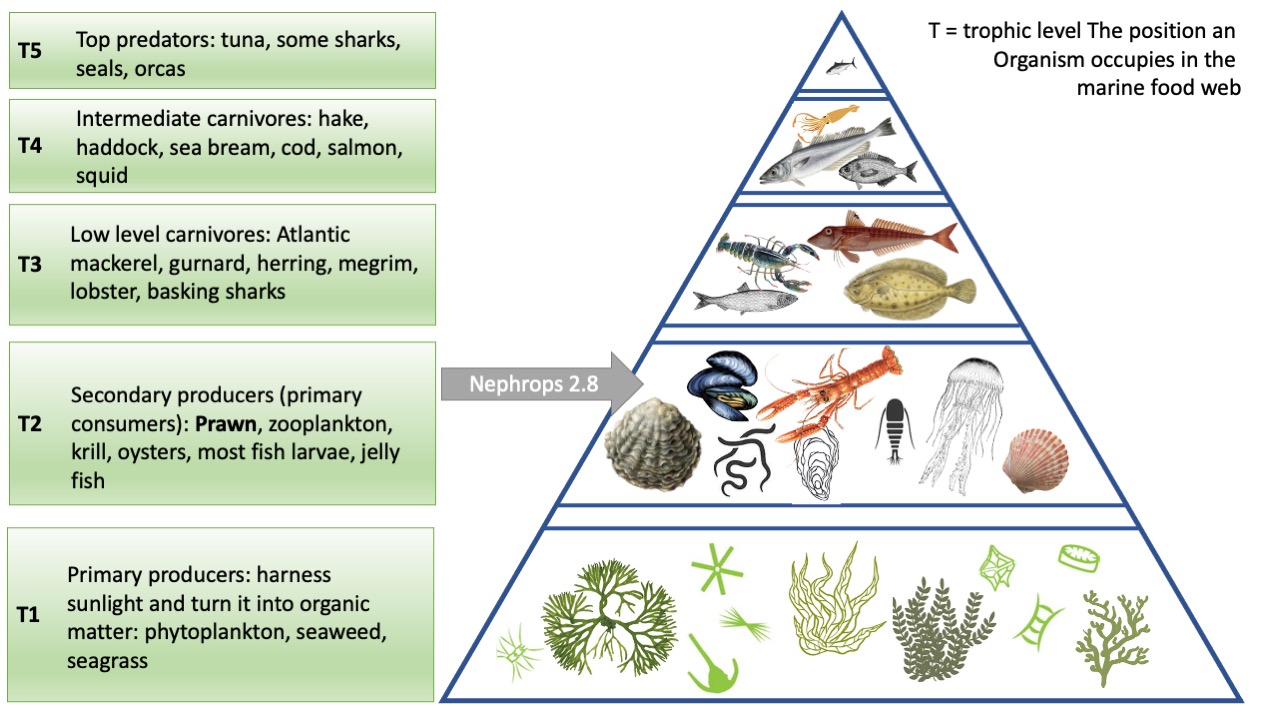Sustainability of Nephrops norvegicus in Ireland
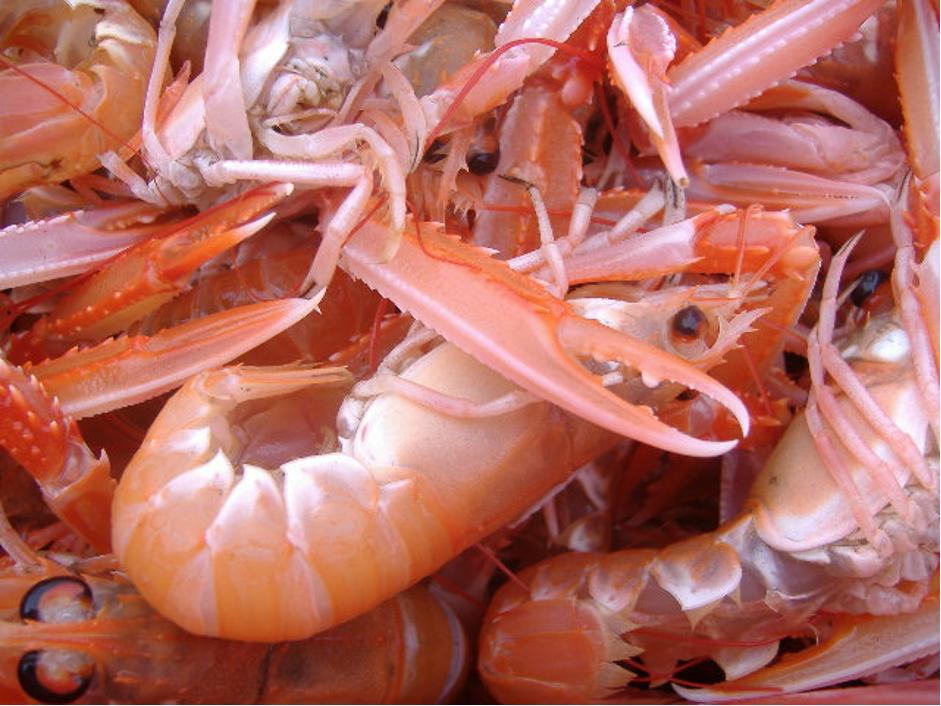
- Sustainability rating: 2-5
- MSC certified: 3
- Recommended minimum size: 5cm (carapace)
- Season: avoid during spawning season in autumn; release any egg carrying females
- Fishing method: pot or creel, bottom otter trawl
There are two main fishing methods used to catch N.norvegicus: the commonly used and relatively destructive method of beam or bottom otter trawling and the very selective, much less destructive creel or pot fishing. For more information on pot or creel fishing see our description of lobster fishing see our description of lobster fishing
The pot or creel method is the best and most sustainable method delivering a higher quality product. Besides having reduced impact on the seafloor and lower fuel consumption, this method also allows fishermen with smaller boats to participate in this high-value fishery.
Unfortunately, this method is also more expensive and your local fishmonger might not be able to afford stocking creel fished langoustines. But don’t be afraid to ask!
Nephrops are usually caught using trawls. Since they are protected from trawling while in their burrows, they are generally caught when they emerge to feed, which usually happens twice a day, often at dawn and dusk. They are commonly taken in mixed fisheries, and the southern stock is closely associated with the fishery for southern hake.
The associated large quantities of bycatch and discards of a variety of species is of concern. For example, the majority of whiting caught in the Nephrops fishery are discarded, because these tend to be below the EU minimum conservation reference size (MCRS). The introduction of highly selective gears to reduce finfish catch and discards in the Nephrops fishery, appears to have reduced whiting catches since mandatory introduction in 2013.
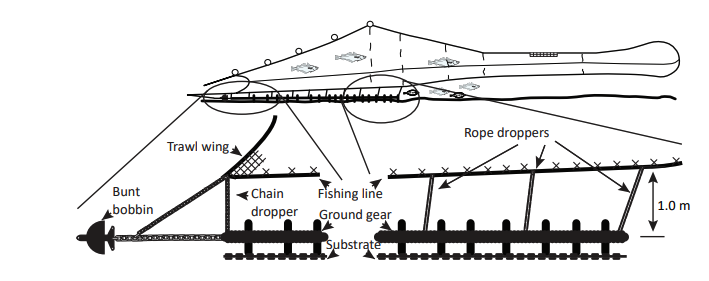
For example, there is an obligation that all Irish vessels targeting Nephrops in the western Irish Sea must use highly selective fishing gear as a condition of national license obligations.
Still, discard levels remain high relative to the landings in regard to whiting and more work has to be done and stricter measures have to be put in place.
In Ireland, BIM (the fishery board authority) demonstrate continued efforts in developing and testing better and more sophisticated fishing technology to reduce this by-catch as well as seabed damage. See their reports on Nephrops survivability in the Irish demseral trawl fishery and the SELTRA sorting box: A highly selective gear for fish in the Irish Nephrops fishery.
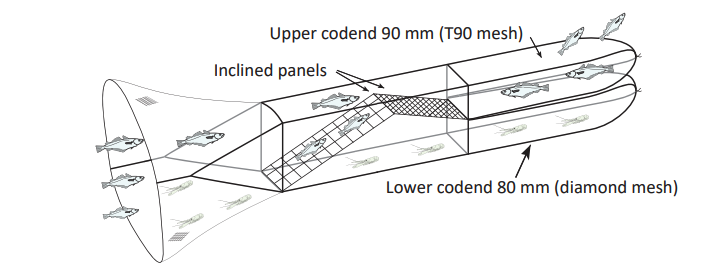
Most recent data show that catches of Nephrops in the waters around Ireland are usually taken by Nephrops directed otter trawl fisheries where Nephrops account for the majority of the landings. One example is the Irish Sea where 80% of the landings come from trips that almost exclusively (>90%) land Nephrops.
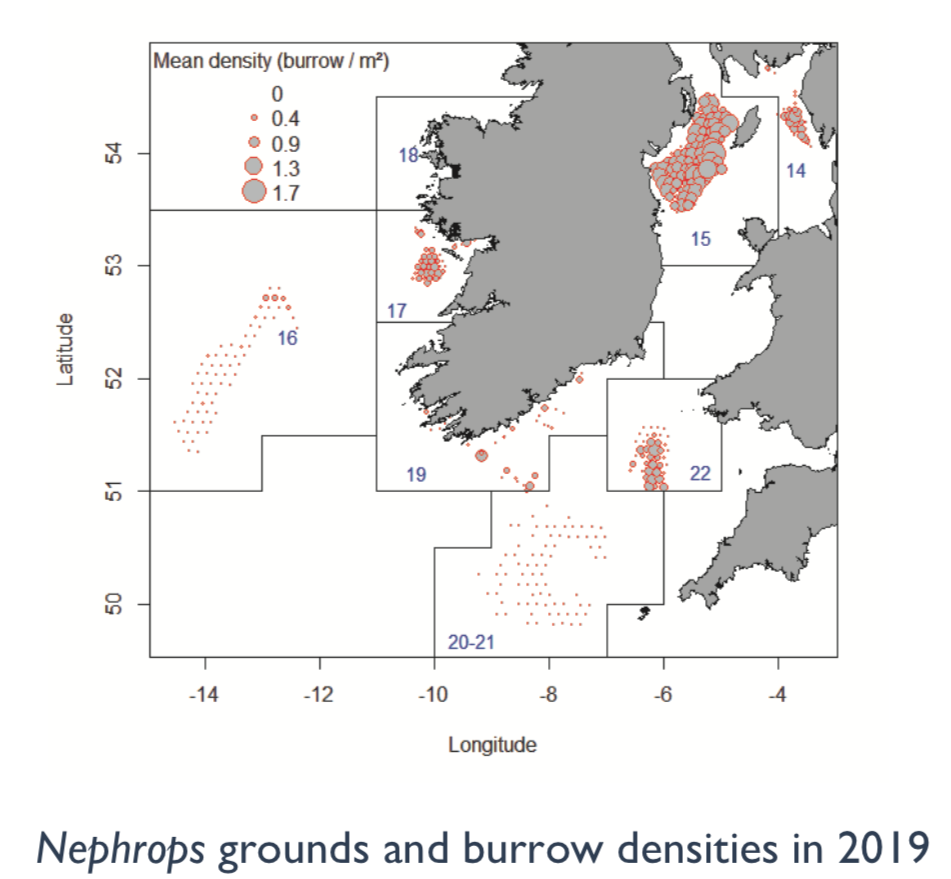
The North East Atlantic individual biological stocks of Nephrops are identified as functional units. A number of functional units make up the sea areas over which a total allowable catch (TAC) is set annually by the EU Council of Ministers. For example, the TAC set for the Irish Sea Nephrops is based on the aggregate total tonnage of removals recommended by science for separate functional unit areas. This method has attracted criticism because it can promote the overexploitation of a specific functional unit even though the overall TAC is under-fished.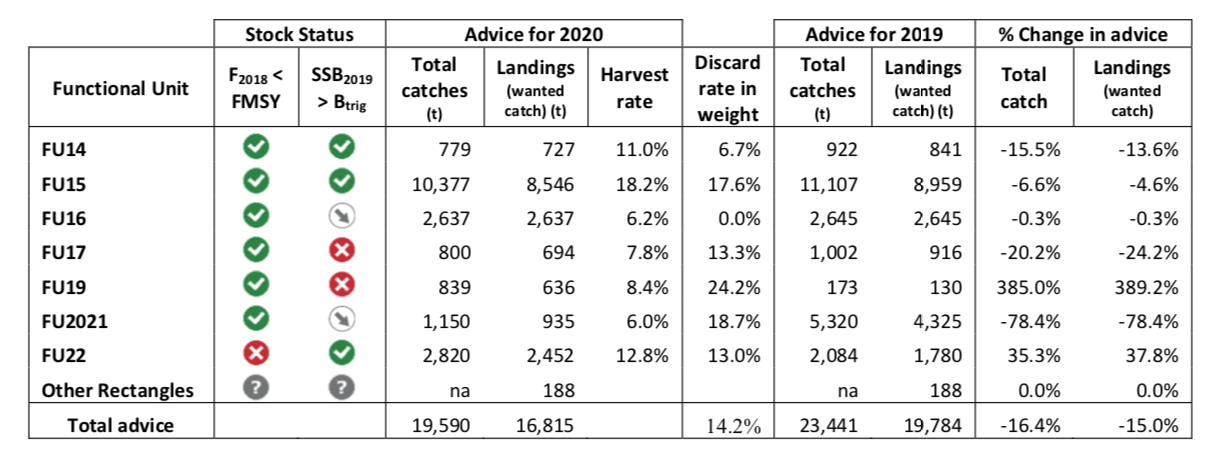
In 2016, the UK implemented a package of emergency technical measures with the cooperation of the fishing industry aimed at reducing fishing activity to induce recovery of the Nephrops stock in the Farne Deeps off North East England which was close to collapse. A stock assessment completed in 2018 by ICES shows that fishing pressure has been cut and this stock is now being fished at a sustainable level.

However, ICES also warn that any substantial transfer of the current surplus fishing opportunities from other functional units to the Farne Deeps would rapidly lead to overexploitation. This suggests that controls on fishing effort should continue at least until the biomass reaches a size that is sustainable when measured against the level of fishing activity by all fishermen wanting to target the stock.
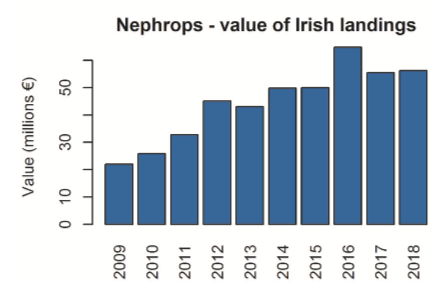
It is also worth noting here, that Irish landings of cod from Irish Sea are mainly taken as a bycatch in the Nephrops fisheries. Moreover, discards from Nephrops fishery may account for up to 37% of the energy requirements of certain marine scavengers, such as the hagfish (Myxine glutinosa). Boats involved in Nephrops fishery also catch a number of fish species such as plaice and sole, and it is thought that without that revenue, Nephrops fishery would be economically unviable.
On average approximately 8,300 tonnes of Nephrops were landed in Nephrops fisheries by Irish vessels between 2016 and 2018 worth more than €56M for Irish vessels in 2018 alone.
The image below shows the fishing method of gill netting, one of the methods used to catch hake in mixed fisheries.
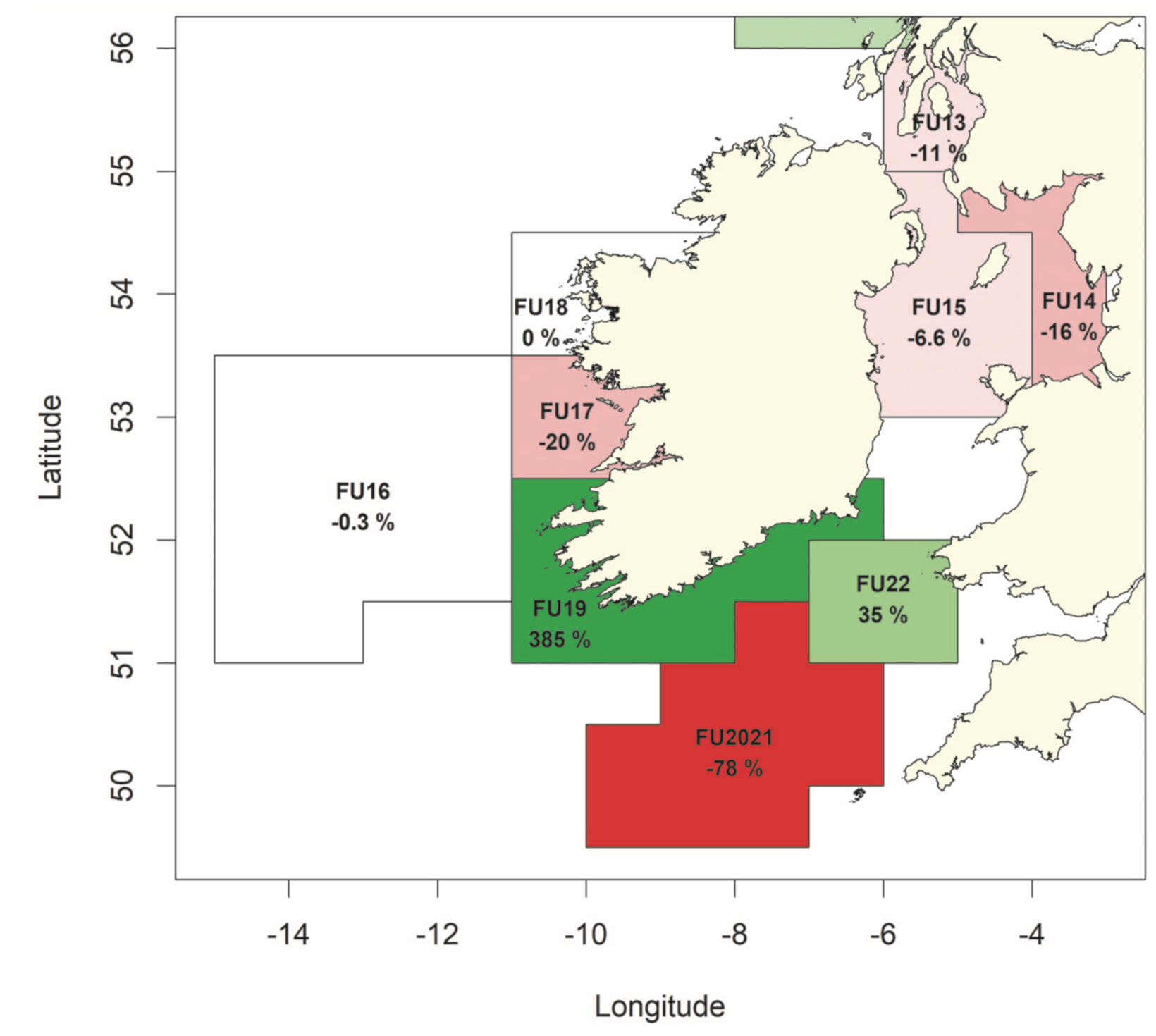
Nephrops in the Marine Food Pyramid
